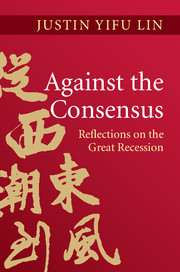Book contents
Part I - What Caused the 2008–9 Global Crisis?
Published online by Cambridge University Press: 05 June 2013
Summary
The global financial crisis of 2008–9 caused the greatest contraction in the global economy since the Great Depression. The crisis began in the United States with a meltdown in the financial system following the bursting of the housing bubble and the collapse of Lehman Brothers. Government actions helped avoid the worst possible scenario, but the world economy remains fragile, with high unemployment and large excess capacity in the advanced economies and high levels of sovereign debt in Eurozone countries.
The economic crisis took almost everyone by surprise. As late as April 2007 the International Monetary Fund (IMF) was affirming that risks to the global economy were extremely low and that there were no issues of great concern. Despite large and widening global imbalances in current accounts, confidence prevailed – confidence in the US financial and political system and its financial regulations, in a capital market that was the largest in the world, and in monetary policy institutions that had always engendered trust. The world economy was seen as robust, and global imbalances were considered sustainable. Few economists expressed serious concerns about the US housing bubble and a disorderly unwinding of rising global imbalances.
- Type
- Chapter
- Information
- Against the ConsensusReflections on the Great Recession, pp. 1 - 4Publisher: Cambridge University PressPrint publication year: 2013



